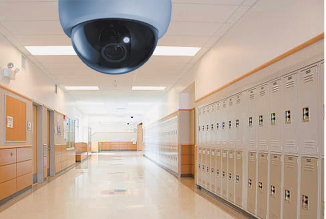A word from legal
CAMERAS IN PUBLIC SCHOOLS

In recent years, most public school systems have increased the use of cameras in their school buildings. Many are placed in and around the entry/exits, common areas, gymnasiums, and hallways. There has been significant discussion and debate around this oversight and surveillance. However, most stakeholders agree that the primary purpose is student and staff safety.
Cameras in school common areas It is commonly believed that the mere existence of cameras deters misbehavior among the student population and promotes and maintains a safe and orderly learning environment. Recordings are valuable in investigations and in holding individuals accountable for disruptive or unsafe behaviors. Unfortunately, many cameras are not functioning or have known blind spots where fights, increased bullying incidents, or even alleged incidents of inappropriate touching often occur. Because of these limitations, cameras are not a substitute for the physical presence of adults.
A camera in the classroom is another story The placement of a camera in a classroom constitutes a working condition, which requires your board of education to negotiate with your union. That’s why to date, no classroom, outside of gymnasiums, in Maryland has a camera installed in it. There have, however, been repeated failed attempts in the General Assembly over the last couple of years to place cameras in the classrooms of non-verbal special education students.
When considering cameras in schools and classrooms, it’s important to strike an appropriate balance between safety and privacy in the workspace, and that should always occur through collective bargaining between school boards and local unions with a focus on educator and student privacy rights. These rights can be protected through agreements around storage, access, use, and who can view the footage and under what circumstances access may be granted.
If there is discussion of placement of a camera in your classroom, contact your local UniServ director to discuss next steps.

